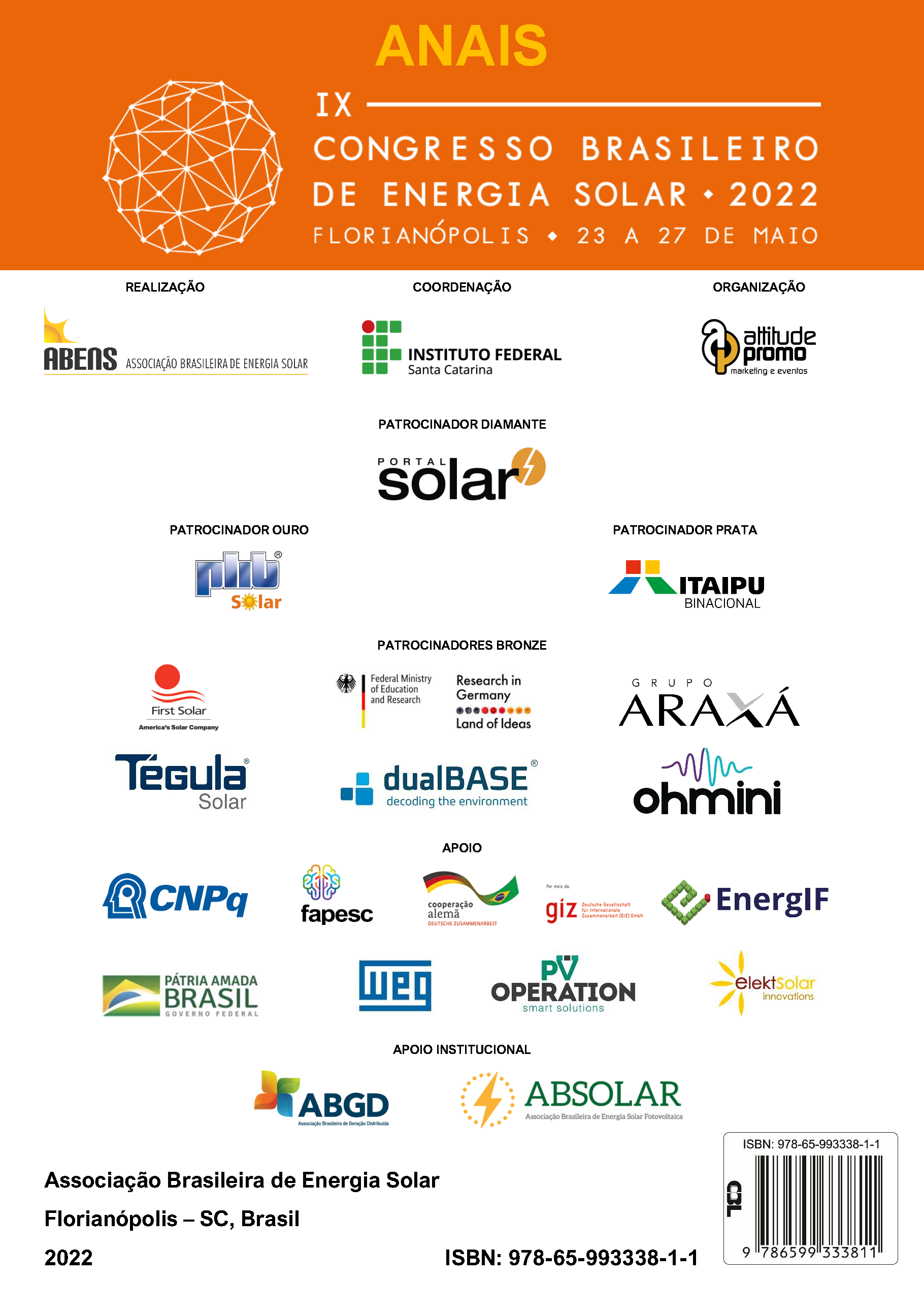OPTIMIZATION OF THE NUMBER OF BUSBARS IN CRYSTALLINE SILICON SOLAR CELLS
DOI:
https://doi.org/10.59627/cbens.2022.1209Palavras-chave:
Front Metallization, PV Cell Optimization, Over-irradianceResumo
With the growth of the photovoltaic (PV) market, the optimization of the efficiency of PV cells comes into focus; as crystalline silicon (c-Si) cell efficiencies get closer to the material’s maximum theoretical efficiency, every decimal increase counts, with front metallization improvement being one of the many possible approaches. Optimizing the front metallization is a low-cost variation of the already known and merchandised PV technologies, bringing to the table the possibility of optimizing shading and resistive losses, and improving the final efficiency of the cell. In this study, c-Si PV cells were simulated with different numbers of busbars and at various irradiance levels, to obtain STC efficiency and to calculate the global efficiency for a given irradiance distribution, based on one year of one-second resolution data. The chosen location for which cells were optimized for was Brotas de Macaúbas, in Northeastern Brazil, that being a repre-sentative location for where utility-scale PV power plants are being deployed in the country. The chosen location also presents frequent over-irradiance events and overall high irradiance levels, with 31,72% of the annual energy being incident at irradiance levels above STC irradiance, for which cell efficiency is measured at. The cell efficiency simulations were carried out in the Griddler 2.5 software for a c-Si PERC M12 cell with up to 15 busbars and for irradiance levels from 0 to 1800 W/m2. Despite the expected rise at the optimum number of busbars due to higher irradiance levels, the research concluded the optimum busbar number for STC efficiency (5BB) is still the optimum number of busbars consid-ering the irradiance distribution of the location, despite the slight reduction in efficiency when real conditions were considered (0,48%). In conclusion, simulations showed that changing the number of busbars alone did not manage to improve the global cell efficiency for the evaluated site.
Downloads
Referências
Equipment, VDMA Photovoltaic. "International Technology Roadmap for Photovoltaic (ITRPV)." (2021).
Kikelj, M., Lipovšek, B., & Topič, M. (2020). Optimisation of front metallisation pattern in silicon solar cells for
annual energy yield. Informacije MIDEM, 50(1), 25–33. https://doi.org/10.33180/InfMIDEM2020.103
M. Braga et al., "Solar Over-Irradiance Events: Preliminary Results from a Global Study," 2020 47th IEEE Photovoltaic Specialists Conference (PVSC), 2020, pp. 2764-2770, doi: 10.1109/PVSC45281.2020.9300868.
Nascimento, L. R., de Souza Viana, T., Campos, R. A., & Rüther, R. (2019). Extreme solar overirradiance events: Occurrence and impacts on utility-scale photovoltaic power plants in Brazil. Solar Energy, 186, 370– 381. https://doi.org/10.1016/j.solener.2019.05.008
National Renewable Energy Laboratory, Golden, CO, Best Research-Cell Efficiency Chart, available in
https://www.nrel.gov/pv/cell-efficiency.html Access in: 02 january 2022.
Qayoom, A., Qadir, A., & Ali, Q. (2019). The Effects of Metallization of Busbars on the Performance of PV Cell. Journ al of Clean Energy Technologies, 7(1), 7–10. https://doi.org/10.18178/JOCET.2019.7.1.501
Shockley, W., & Queisser, H. J. (1961). Detailed Balance Limit of Efficiency of p‐n Junction Solar Cells. Journal of Applied Physics, 32(3), 510–519. https://doi.org/10.1063/1.1736034


